In this review, I will provide an in-depth analysis of the Bounty Hunter Land Ranger Pro metal detector, sharing my personal experiences as a user. My goal is to help you determine whether this detector is a suitable choice for your metal detecting needs.

Contents
Intro
I have spent over 100 hours metal detecting with the Bounty Hunter Land Ranger Pro, unearthing treasures such as Roman Imperial coins and relics from history, including rusty helmets. Living in Europe offers a unique opportunity for discovering various historical artifacts.
Today, I’m sharing my experiences with this metal detector at the request of a friend. If you’ve read articles discussing the best metal detectors for beginners, you might already know that the Bounty Hunter Land Ranger Pro is highly recommended for newcomers. I wholeheartedly agree, having used it myself and suggested it to friends looking to start their own metal detecting adventures.
If you’re uncertain about committing to this hobby, working within a budget that doesn’t allow for a professional model, or simply looking for a fun activity, the Ranger Pro is an excellent choice. I will elaborate on my reasons for this opinion shortly, but first, let’s look at the product line.
The Bounty Hunter metal detectors are produced by First Texas Products, a company that adheres to American quality standards. They have service centers throughout the country, ensuring support and maintenance are readily accessible. If you examine the design closely, you might notice similarities between the Bounty Hunter detectors and Fisher metal detectors, which is expected since First Texas Products owns both brands, as well as Teknetics.
In addition to the Land Ranger Pro, the product line includes the Bounty Hunter Quick Draw Pro and the Bounty Hunter Lone Star Pro. While researching my options, I compared their features and ultimately decided on the top model. I recommend the Land Ranger Pro, as the other two models lack significant functionality, and the price difference is minimal.
It’s worth noting that the packaging is rather basic, which is common for entry-level detectors. Inside, you’ll find a simple box and a manual, without any special accessories.
| Model | Bounty Hunter Land Ranger Pro |
| Weight | 2.5 |
| Batteries | 1 (9V) |
| Headphones | No |
| Warranty | 5 year |
| Operating Principle | VLF |
| Standard Searchcoil | 11″ DD |
| Operating Frequencies (kHz) | 7.69 |
| Water resistance | Waterproof coil |
| Submersion Depth | No |
| Ground Balance | Manual/Auto |
| Search Modes | 7 |
| Audio Threshold | No |
| Electronic Pinpointing | Yes |
| VDI (0 to 99 scale) | Yes |
| Build-in flashlight | No |
- ADVANCED TARGET ID TECHNOLOGY: The Land Ranger Pro utilizes state-of-the-art…
- ALL TREASURES ALL ENVIRONMENTS: 7-Modes of operation allow quick set-up for any…
- DEEP-PENETRATING METAL DETECTOR: The Land Ranger Pro has an 11″ DD waterproof…
- ALL PURPOSE METAL DETECTOR: Can detect all types of metal. Perfect for jewelry,…
- LIGHTWEIGHT AND EASY TO CARRY: It weighs just 2.5lbs and is well balanced with…
- 11″ DD Searchcoil for Exceptional Depth and Coverage: The Bounty Hunter Land…
- Enhanced V-Break Technology for Custom Audio Responses: With V-Break, users can…
- Advanced Target-ID System with LCD Display: The high-resolution LCD screen…
- Ground Grab Computerized Ground Balancing: This detector features an automated…
- Seven Preset Search Modes for Versatility: The Land Ranger Pro includes seven…
Last update on 2025-06-11 / Affiliate links / Images from Amazon Product Advertising API / Source: Amazon Affiliates
The device appearance
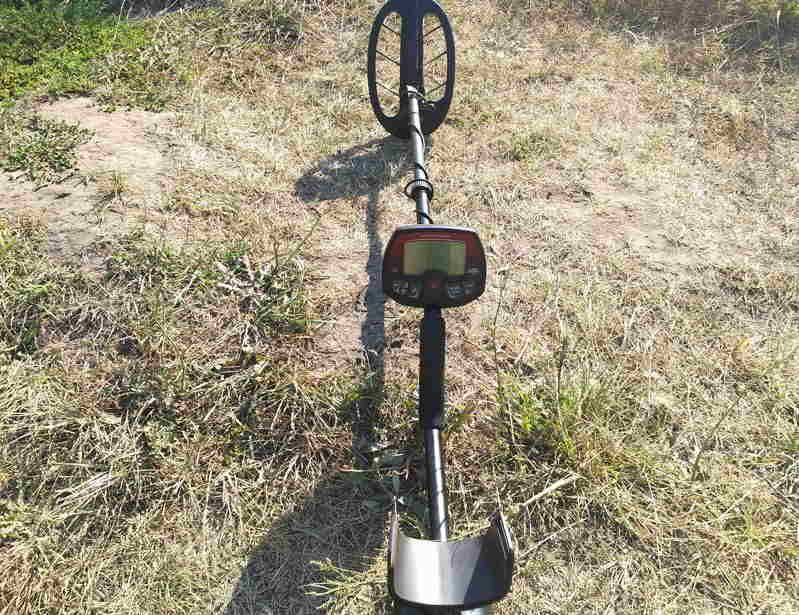
The Bounty Hunter Land Ranger Pro features a classic design that includes a control unit, an adjustable shaft, and a search coil. Weighing only 2.5 pounds, this metal detector is exceptionally lightweight, which is a significant advantage for users who spend hours detecting.
During my time using this detector, I found that comfort is key. By adjusting the shaft length to suit my height, I was able to avoid strain on my arms and hands. Initially, I made the mistake of using it with the shaft set too long, which forced me to bend my arm uncomfortably. Although I managed to walk for an extended period without taking breaks, it became less comfortable over time. Adjusting the shaft appropriately greatly improved my experience and allowed me to enjoy longer detecting sessions without fatigue.
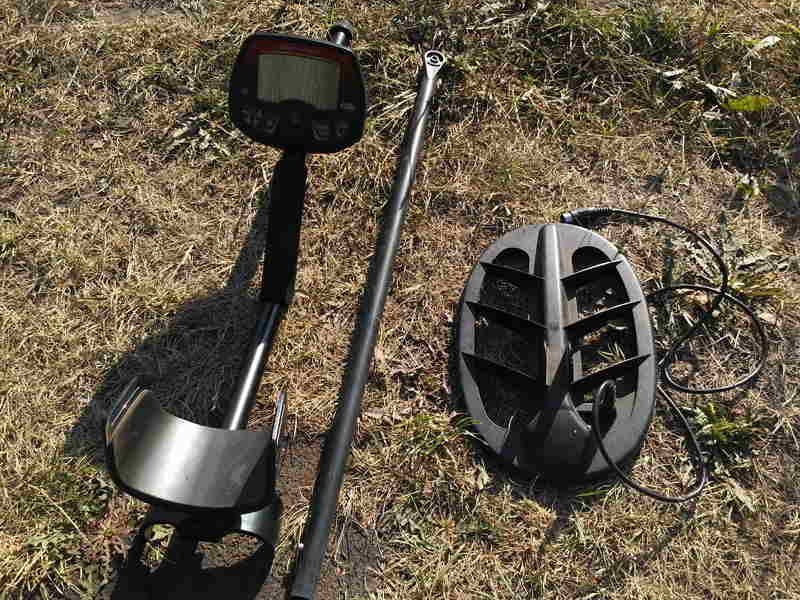
11 inches large coil
The coil of the Bounty Hunter Land Ranger Pro is noteworthy. It features a solid, oval shape and measures 11 inches in diameter. Most importantly, it is a DD coil, a feature not commonly found in metal detectors within this price range. DD coils are advantageous because their detection field spreads in a band rather than a cone, allowing for more effective target localization.
The coil is securely attached to the shaft using a screw, a design choice I appreciate. I’ve encountered issues with coils from other metal detectors that often have broken edges, but I’ve had no problems with this coil’s attachment. However, a drawback is that the set does not include a spare screw, which means it’s easy to misplace or forget the original.
The image provided illustrates how the coil is fixed to the shaft, which speaks to its solid construction. While the attachment is generally tight, it’s essential to ensure the coil is properly secured; otherwise, its tilt angle may vary during use.
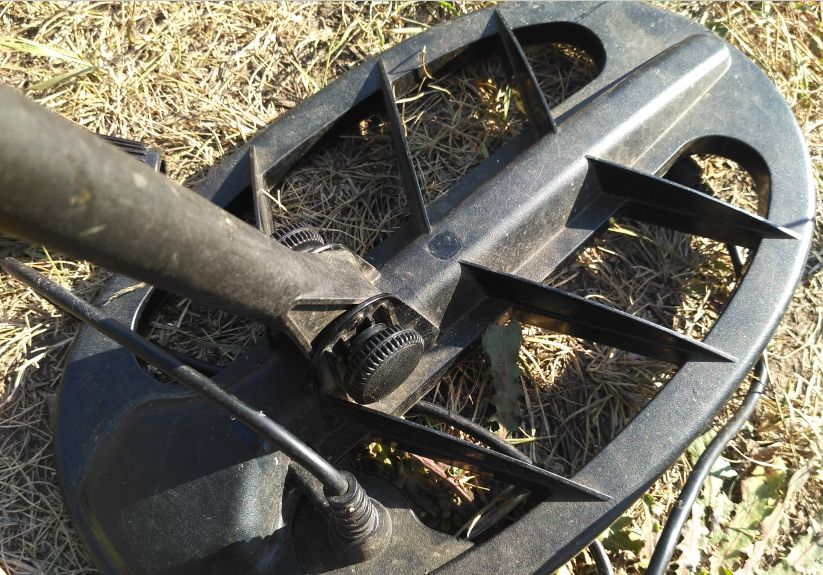
Control box
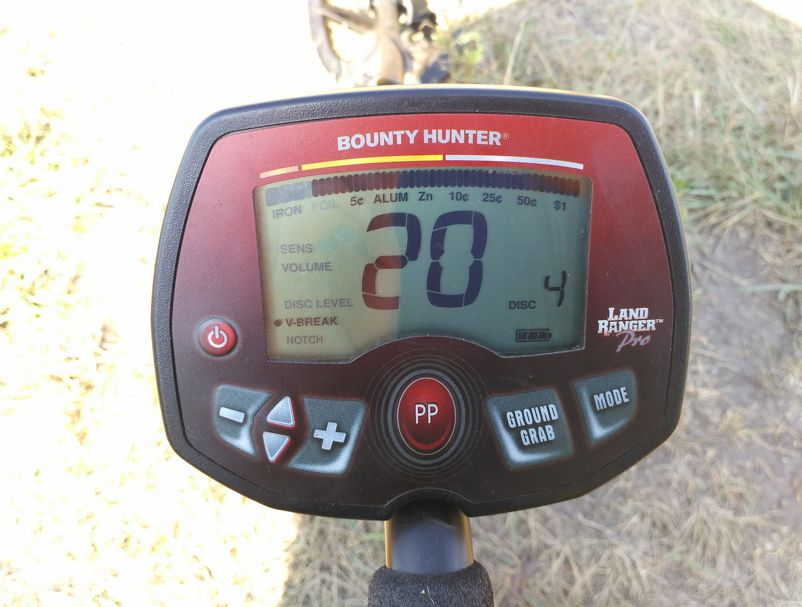
One notable drawback of the Bounty Hunter Land Ranger Pro is the connection between the cable and the control unit. Unlike many other detectors that feature a screw-in connection, this model uses a simple plug connection.
While this design may seem convenient, it becomes problematic during active use. The plug can easily become disconnected when the detector brushes against trees, bushes, or rocks, leading to false signals. This issue is particularly pronounced when the sensitivity is set at a high level of 8 or above.
I quickly adapted to this challenge, but it can be frustrating, especially in densely vegetated areas where the likelihood of snagging is greater. Ensuring a secure connection is essential for accurate detection and a smoother metal detecting experience.
Power supply
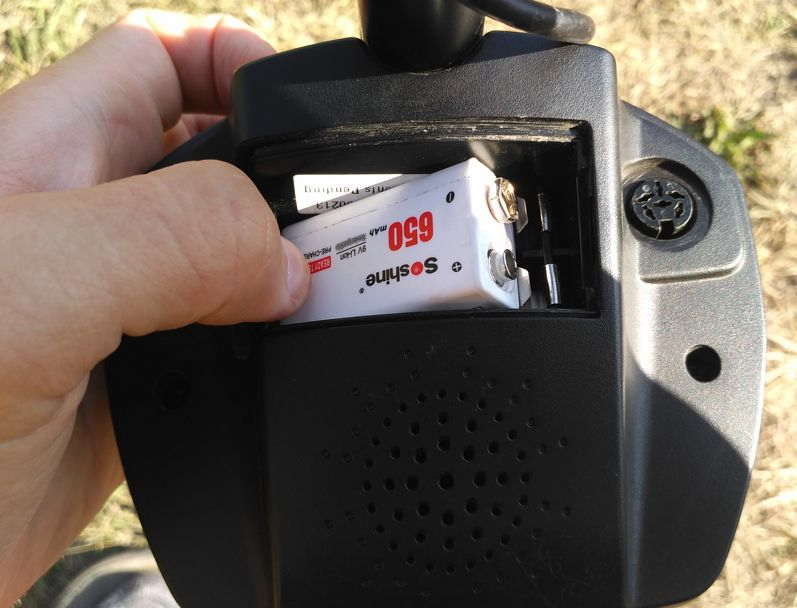
However, you can typically work an entire light day on a single battery charge, with some power still remaining for the following day. This efficiency is particularly beneficial for users who prefer extended detecting sessions without frequent battery changes.
One practical tip I have is about extracting the battery with a single sweep. While this technique is mentioned in the manual, it’s often overlooked. Learning this simple trick can enhance the convenience of battery replacement during field use.
Headphones
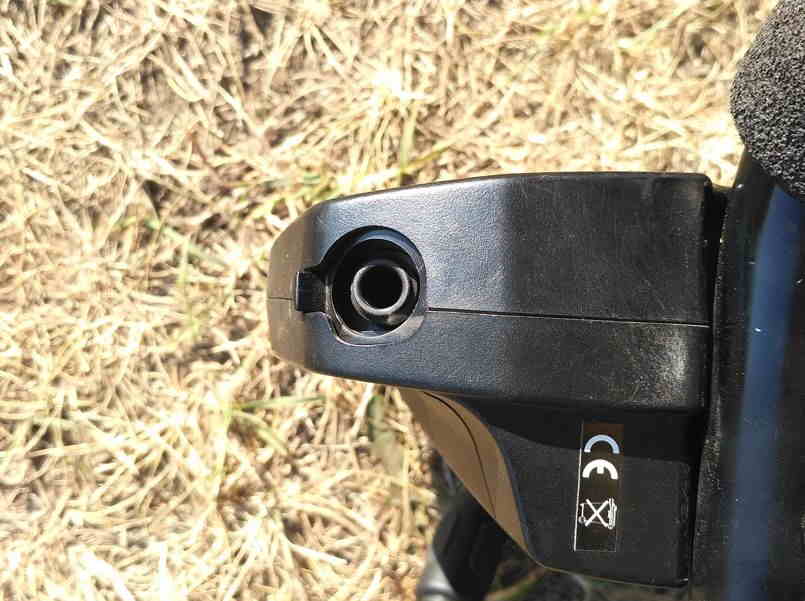
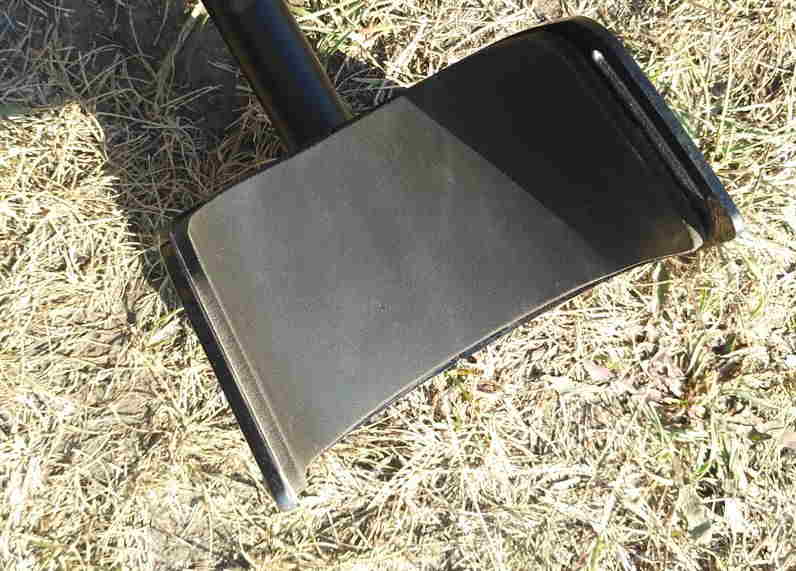
Using headphones can be particularly advantageous in crowded areas, allowing you to hear signals from targets that the device’s speakers may miss. I recommend purchasing the headphones included in the Bounty Hunter HEAD-PL set for optimal compatibility and performance.
Regarding the elbow board, it serves its purpose effectively. It’s designed to be convenient, whether you’re wearing clothing or resting your bare arm on it. The elbow board is solidly constructed, ensuring durability without the risk of cracking, which enhances the overall comfort during extended detecting sessions.
Control and settings
The Bounty Hunter Land Ranger Pro features a control unit located on the upper shaft, with its large display being one of its standout features. The display is designed for easy readability under various weather conditions, ensuring you can see essential data clearly. Although it lacks backlighting, I’ve never found this to be a significant issue.
As illustrated in the accompanying image, the display provides important information, including a discrimination scale, target identification ranging from 0-99, depth measurement in inches, program number, battery status, and various settings such as sensitivity, volume, ground balance, discrimination level, visual break (v-break), and notch functionality.
The discrimination scale focuses primarily on American coins. For instance, you have the option to notch out iron signals, which allows the device to ignore these targets. Personally, I prefer to keep this feature active to receive comprehensive information about my surroundings.
The discrimination function performs reasonably well, particularly at average depths. However, it’s important to note that the metal detector sometimes misidentifies deep targets, especially rusty items, as non-iron metals. Gaining experience is crucial in these situations, as you may need to dig through numerous rusty nails, buckets, horseshoes, and other debris to enhance your detecting skills.
While the depth scale on the right displays measurements in inches, its precision can be somewhat lacking. Consequently, I recommend treating this reading as a rough estimate rather than a definitive measurement.
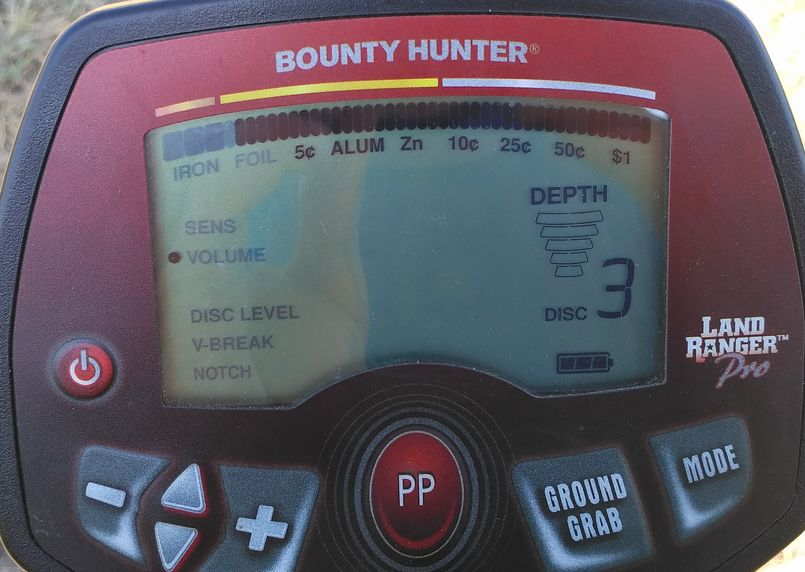
Search modes
The Bounty Hunter Land Ranger Pro features seven search programs, each designed for specific types of metal detecting scenarios:
- Coins
- Jewelry
- Relics
- Program #2 – Two-tone audio
- Program #3 – Three-tone audio
- Program #4 – Four-tone audio
- All Metal
Program Features
- Coin Mode: Notches out iron, aluminum, foil, and zinc. This mode is particularly useful for locating coins without interference from unwanted metals.
- Jewelry Mode: Similar to Coin Mode, but allows for the presence of aluminum and foil while notching out iron. This mode is effective in areas where jewelry is likely to be found, especially in parks or sandy beaches.
- Relic Mode: Partially notches out iron, only allowing signals from targets with higher VDI (Visual Discrimination Indicator) values. This mode is beneficial for finding historical artifacts amidst iron debris.
Noise Management in Iron-Infested Sites
While searching in iron-infested areas, you might encounter overwhelming noise as iron signals often suppress other signals. I found that switching to Jewelry Mode helps significantly, as it minimizes the noise from unwanted iron signals, allowing for a more focused and productive hunt.
Tones and Sensitivity
The programs that offer audio differentiation (Programs 2, 3, and 4) vary in the number of tones:
- Program #2: Two-tone audio
- Program #3: Three-tone audio
- Program #4: Four-tone audio
Each program offers a different auditory feedback based on the type of metal detected, aiding in immediate identification.
All Metal Mode
The All Metal Mode has no discrimination capabilities and operates in monophonic audio. This mode is the most sensitive, providing maximum depth detection. However, I recommend using it primarily in areas with minimal iron or trash, as it can lead to overwhelming signals from various unwanted metals.
Popularity of the Four-Tone Mode
Among the various search modes, the four-tone program is frequently favored by treasure hunters, likely due to its balanced approach to sensitivity and discrimination. It allows users to clearly identify different types of metals while maintaining good depth capabilities. In my experience, when using this mode, I typically set the sensitivity level to around 7-8 and volume to about 6-7.

Pinpoint
The Bounty Hunter Land Ranger Pro metal detector includes a pinpoint mode, which is a valuable feature that helps users accurately locate targets, such as coins, without the need to dig large holes. This precision is essential for effective metal detecting, as it allows you to minimize disturbance to the ground and focus on specific target areas.
Quality of the Pinpoint Button
Unfortunately, the pinpoint button (designated as the oval “PP” button) has some quality concerns. Users have reported that the mode tends to deactivate unexpectedly after a few moments of use. This can be frustrating, particularly when you are trying to hone in on a target.
User Experience
In my experience, there have been occasions when I activated the pinpoint mode, only to lose the signal before I could determine the exact location of the target. Upon checking the display, I often found that the pinpoint mode had switched off on its own.
After discussing this issue with fellow users, I discovered that the button functions best when pressed firmly in the center. A soft or off-center push often leads to the mode disengaging prematurely. As a result, I found it necessary to apply considerable pressure to ensure it remained active, which can be inconvenient during a treasure hunt.
Adaptation and Alternatives
Due to these challenges with the pinpoint mode, I eventually adapted my technique and learned to locate targets based on the device’s audio signals alone. While the pinpoint mode can be useful, particularly for beginners, my experience has led me to rely more on the standard detection signals.
Ground balance
One notable feature of the Bounty Hunter Land Ranger Pro metal detector is its ability to perform both automatic and manual ground balance adjustments. This feature is crucial for optimizing the detector’s performance based on the type of ground you are searching, which can significantly improve detection accuracy and minimize interference from mineralization.
Automatic Ground Balance
The automatic ground balance adjustment is user-friendly and can be activated simply by pressing the corresponding button. However, it’s important to note that this option is not available in the coin, jewelry, and relic search modes. This limitation can be a drawback for users who primarily hunt in these modes, as they will need to switch to a different setting to adjust the ground balance automatically.
Manual Ground Balance
For users who prefer more control over their settings or are working in challenging ground conditions, the manual ground balance adjustment provides an effective solution. To set this up, simply switch to the Ground menu and adjust the scale to your desired ground balance values. This method allows for precise tuning, ensuring that the metal detector can effectively filter out unwanted signals from the soil.
Conclusion
The Bounty Hunter Land Ranger Pro stands out as an excellent choice for beginners in metal detecting. Its lightweight design, quality coil, and features such as ground balance, multiple search modes, and effective discrimination make it user-friendly and versatile. The inclusion of a pinpointer function also enhances its utility, allowing for more precise target location.
Advantages
- Lightweight Design: At only 2.5 pounds, it’s comfortable to use for extended periods without causing fatigue.
- Quality Coil: The 11-inch DD coil improves target detection and discrimination.
- Ground Balance Function: Automatic and manual adjustments help tailor the detector’s performance to various ground conditions.
- Search Modes: Multiple modes cater to both novice and experienced users, enhancing flexibility in different environments.
- Excellent Discrimination: The device can effectively filter out unwanted signals, focusing on valuable targets.
Disadvantages
Despite its many strengths, the Land Ranger Pro does have some drawbacks:
- False Signals: The detector may give false signals when it comes into contact with stones, bushes, or other obstacles, particularly in high sensitivity settings.
- Poorly Made Pinpoint Push Button: The pinpoint function can be unreliable due to the button’s design, requiring a firm press in the center to function properly.
Overall Impression
While these disadvantages are worth noting, they pale in comparison to the benefits offered by the Bounty Hunter Land Ranger Pro, especially for beginners. The overall value and performance of the detector make it a worthwhile investment. After using it for two years without major issues, it has proven to be a reliable companion for treasure hunting. Currently, the only consideration is upgrading to a more advanced model (Nokta Legend) as experience and needs evolve.

